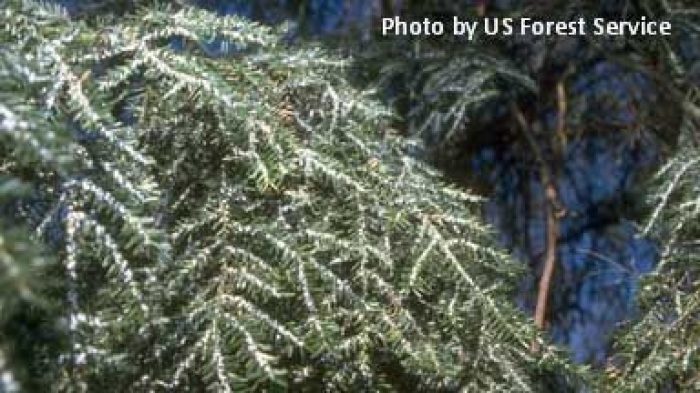Have you ever heard of Hemlock Woolly Adelgids? Perhaps, the Elongate Hemlock Scale? If not, you are not alone! Hemlock Woolly Adelgids (Adelges tsugae) are Asian aphid-like insects that have been in the United States since the 1920s. Like aphids, they damage and kill native hemlock trees by sucking their sap and interrupting water and food flow through the tree’s cambium layer. Their name comes from the white “woolly” substance that covers the insect in most life stages but is most detectable on their egg masses in the spring.
After their discovery in the Western United States, the Hemlock Woolly Adelgid spread to a considerable portion of the Midwest and Eastern states, decimating many Hemlock forests and permanently damaging our native landscapes. Similarly, the Elongate Hemlock Scale (Fiorina externa) is an invasive, nonnative sapsucker commonly found in tandem with the Hemlock Woolly Adelgid. In many cases, after a tree has been put under stress from the activity of the Hemlock Woolly Adelgid, subsequent Elongate Hemlock Scale populations infest and build on these vulnerable trees. Because of this continual stress, these two invertebrates have been the culprit of much of our keystone Hemlock forests’ declining health. A majority of the damage and mortality caused by these insects is found in populations of our largest, oldest, and most valuable Hemlock trees. As a keystone species, Hemlocks offer not only ecological value by maintaining forest temperatures and soil development, but they also provide economic value by drawing visitors to the forests and parks. By preserving our Hemlocks, we can help ensure the value and function of our native landscapes!
EnviroScience is proud to offer various IPM control methods aimed at the long-term preservation of the Eastern Hemlock. Additionally, our team is available for individual consultation and identification services if you suspect that your Hemlocks are infested by the Hemlock Woolly Adelgid or the Elongate Hemlock Scale.




